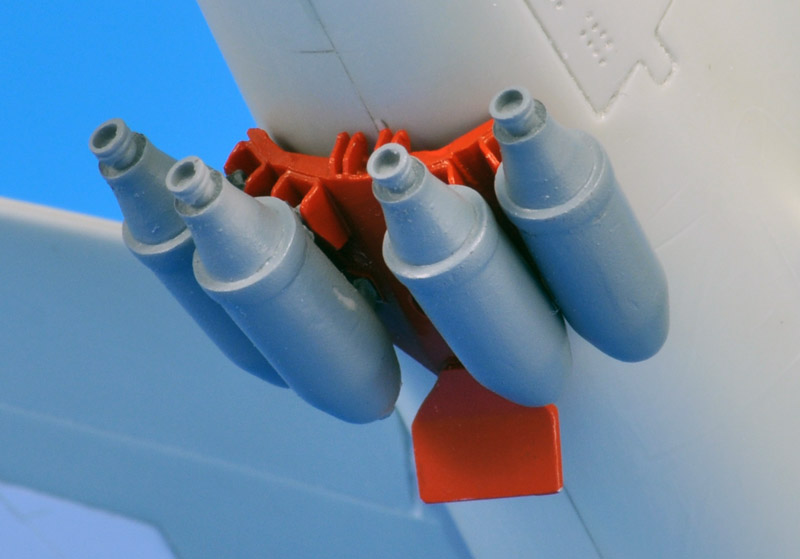Monogram 1/48 F-84F 'stores configuration study model'
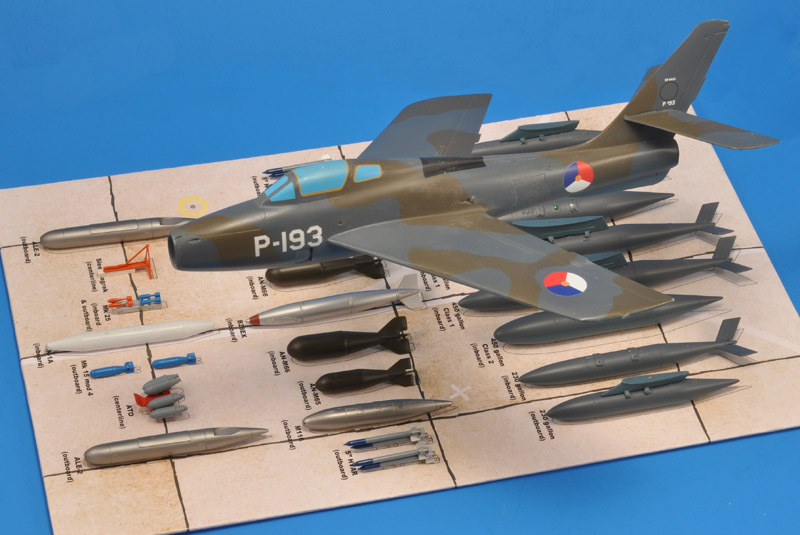
| For a study of F-84F weapons and stores used by the Royal Netherlands Air Force, I wanted to build a simple model to display various stores configurations. I bought a Monogram F-84F with the Mark 7 nuclear bom (kit number 5437), and later I found another, bagged and 20% built model, that donated its fuel tanks. All the rest had to be sourced elsewhere. I spent three years on this project, slowly moving from one challenge to the next. To limit the length of this web page, only the finished articles are shown below. The links in the texts take you to separate webpages that show the details of their construction.
|
The end result
| I built the Monogram F-84F model purely for use as a 'stores configuration study model', not as a traditional static display scale model. An 'in-flight' model was far more practical than one with the landing gear down.
| 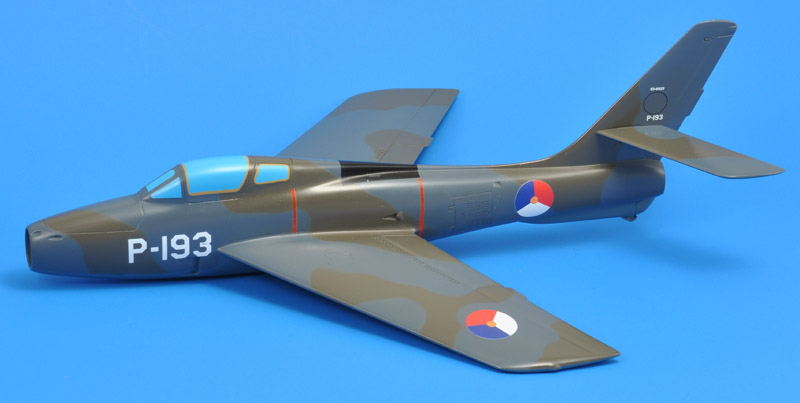
|
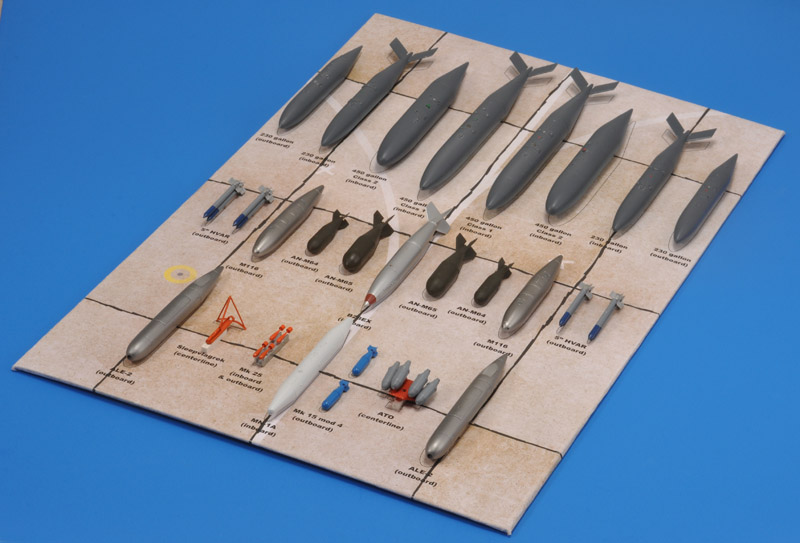
| I made a base for all stores, using 2 mm plastic card, with magnets installed, so all stores would keep their position. I covered it with a print of a simulated dispersal layout, concrete with tar strips. I also added the store names. The instructor seat is kept separate due to its delicacy. The display was revised four times, as my understanding of the RNLAF F-84F stores increased. The latest version is shown here.
|
| At the front are all 'utility' items: bomb rack, 25 pound practice bombs on a rack, 100 pound practice bombs, ATO unit, target towing rack and chaff pods.
| 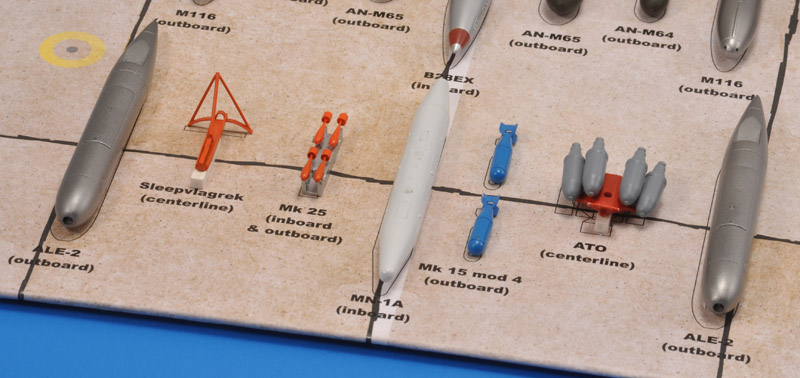
|

| In the middle all the weapons: nuclear bomb, conventional bombs, napalm bombs and rockets.
|
| At the rear are all the fuel tanks used by the RNLAF F-84F. I gave them red and green dots to distinguish left and right stores, optimised for fit under the respective pylons.
| 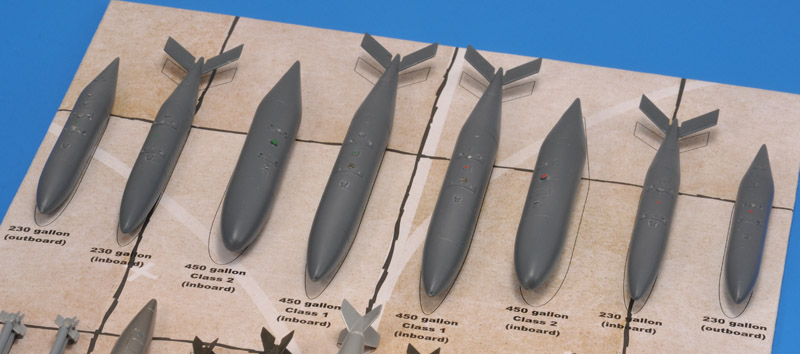
|
Stores of the RNLAF F-84F
Note that all weapons lack attachment lugs, since they are meant to be mounted on the pylons using the built-in magnets, to build up specific configurations. Also, I did not apply stencils or other markings, let alone weathering, just the basic color(s), in line with the F-84F model.
Four types of fuel tanks were used by RNLAF. In the center the most common inboard tank: the long 450 gallon 'Type 1' tanks, as supplied in the Monogram kit. These have a pronounced nose-down attitude when mounted, since the forward attachment point of the pylon has an extra spacer installed. Next to them are the slightly fatter and shorter 'Type 2' 450 gallon tanks, that are sometimes called 'war tanks' because they lack sloshing baffles. Mine came from a Monogram F-101.
The next set (with fins again) is the 230 gallon tank, for the inboard pylons. RNLAF stopped using these at one point, the 450 gallons were more practical. I guess the 230 gallon inboard tanks were more common in countries with warmer weather. I made mine by combining a modified outboard tank with the tail of the 'Type 1' 450 gallon tank. The last set are the outboard 230 gallon finless tanks, that were rarely used (Volkel only). At least four different variants were made, and at least three different types were used by the RNLAF. But I could not find the specific details, so this is a generic 230 gallon version, made by shortening the kit supplied tanks.
| 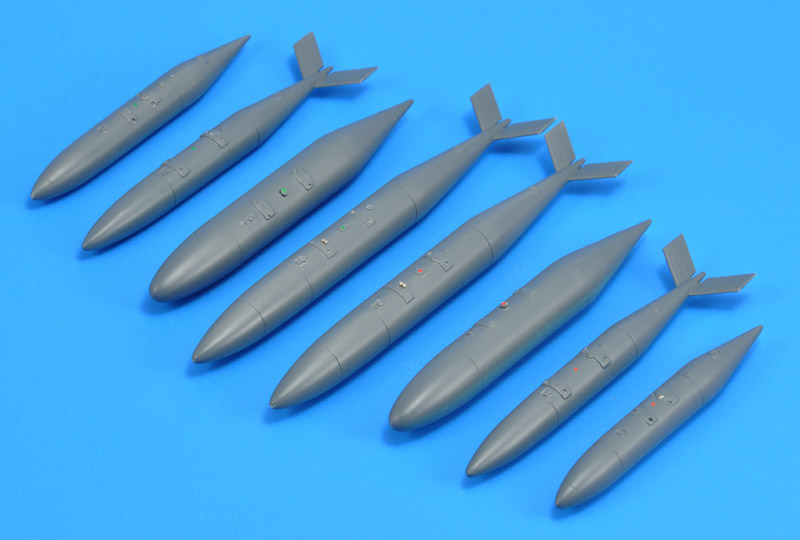
|
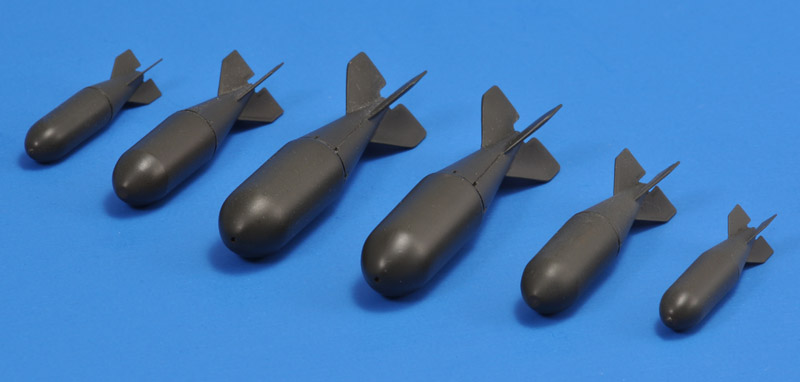
| At the start of my research, I thought the AN-M65 and AN-M66 conventional bombs were in stock for the RNLAF F-84F. But later I concluded that the AN-M64 and AN-M65 were in stock, and the AN-M66 became a question mark. More on the latter, after more research.
The AN-M64 500 lbs, AN-M65 1000 lbs and AN-M66 2000 lbs bombs were of WW2 vintage, but were fitted with conical tails instead of WW2 style 'box' fins. At open houses and in stores display photos, the bombs were often fitted with wooden 'transport rings' so they could be rolled despite the welded-on attachment lugs (that my model bombs lack). For some time I thought they were anti-ricochet rings, as seen on WW2 German bombs and cold-war Soviet bombs. I did not add these rings to my model bombs.
Shown here are the all three bombs, with a question mark for the large AN-M66.
|
| A quite common store on the RNLAF F-84Fs were M116A napalm bombs. The M116 can be easily identified by the unique 'eyes' in the nose cap and the tail cap. I had to scratch-build this store.
| 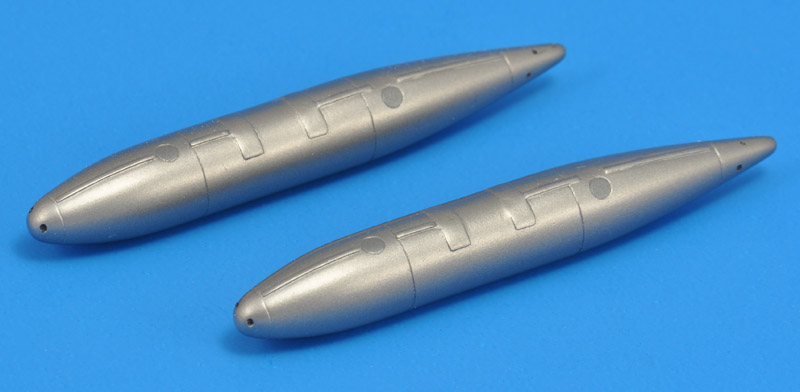
|
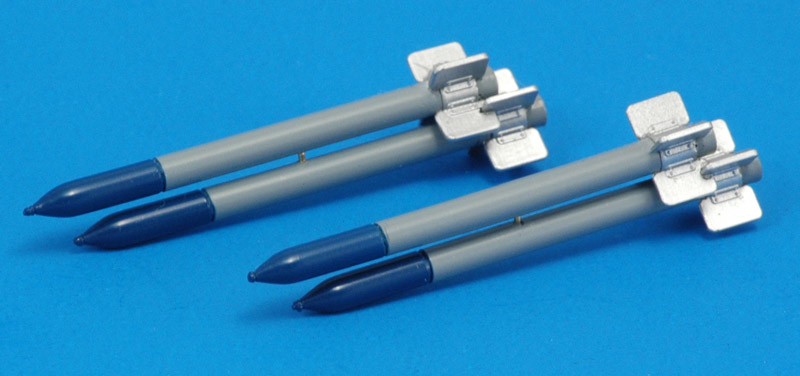
| Another common RNLAF F-84F weapon were the HVAR 5 inch rockets. I used the Eduard HVAR set, making stacks of two, with the fins interconnecting. They were also used as singles.
I only built the practice version of the HVAR. To be complete, I should add the versions with live warheads. These were used on some practice missions ('hot rockets') according to former pilots.
|
The RNLAF supplied NATO with two strike squadrons, that trained for missions with nuclear bombs exclusively. For a long time it was thought the Mark 7 (rearmost) was the weapon employed, like the USAF(E) used on the Thunderstreak. The fin configuration was a long-standing question mark, but I only found F-84F photos that show the configuration configration shown, with the folded vertical fin unfolded. I also built the unique pylon for this weapon, that creates a strong nose-down attitude of the bomb. The 'Blue Boy' training rounds ('drop shapes') were also flown in training missions by USAF(E) Streaks.
During the research it became clear that the more modern B28 was the nuclear weapon employed by the Dutch F-84F strike squadrons. Next question was which version of the B28, the 'slick' B28EX (front) or the parachute-retarded B28RE (middle). Later I concluded it was the B28EX, since the LABS bombing computer (as installed) worked with ballistic weapons only. Another question mark is whether there were training rounds ('drop shapes') of the weapon(s). For comparison, during the RNLAF F-104 era, each strike pilot would annualy drop a shape on the range.
| 
|
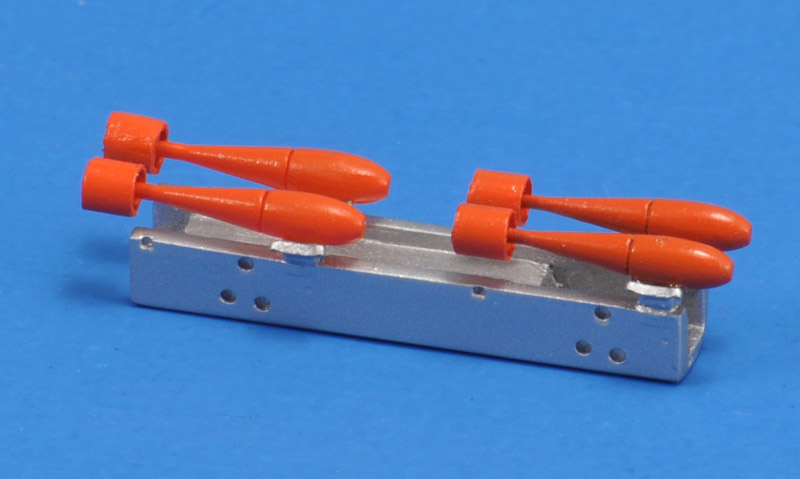
| The most commonly used practice weapon carrier was the AF/B37K or B37K that could load four small practice bombs. I still do not know what it was called exactly in the RNLAF. AF/B37K is the USAF designation, I've read it was called R-3 or 'LABS rack' within the RNLAF, and in the Luftwaffe it was called Mk 25.
The Mk 76 practice bombs are from the Daco F-104 set, modified with a tube around the fins. Practice bombs were orange during the most of the life of the Streak, and possibly blue during the last years.
|
| A practice weapon seen less frequently was the Mark 15 Mod 4 practice bomb of 100 lbs weight. I read it was called the 'Blue Bird', but I'm not 100% sure it's correct since I cannot find that name anywhere. Maybe it was 'Blue Boy' ? Besides the Mark 15 Mod 4, the largely similar M38 was probably also used, I believe, but I haven't built that yet. My impression is that these practice bombs were used to simulate napalm bombs, using the skip bombing technique.
| 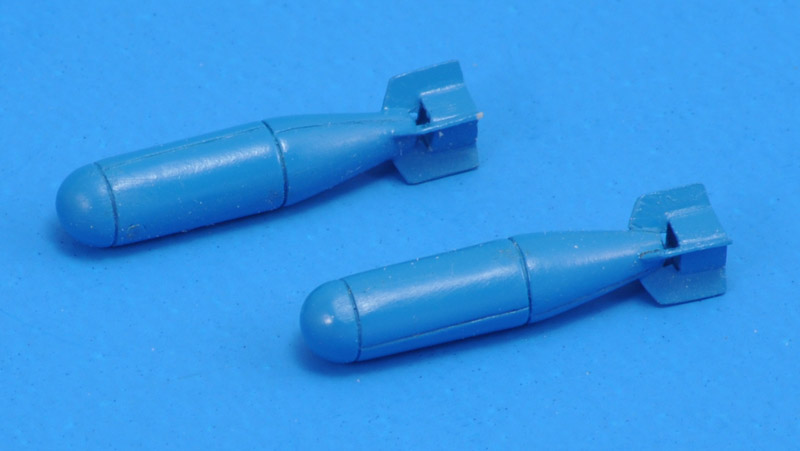
|

| Rarely seen was the MN-1A (later SUU-21) practice bomb carrier. It is associated with the strike (nuclear) mission, since it simulates the safety steps that must be executed before a simulated nuclear weapon can be dropped. It was therefore only used by the Volkel squadrons, on the (otherwise empty) left inboard pylon. As far as I can tell, the MN-1A version with doors was used.
|
| Maybe the biggest challenge of the whole project was figuring out the Assisted Take-Off (ATO) rack. No kit has this part, and there was a definite lack of decent photos. Combined with the complex shape, it was a difficult shape to draw in 3D CAD. And the 3D print itself also had its problems. But I'm happy with the result!
| 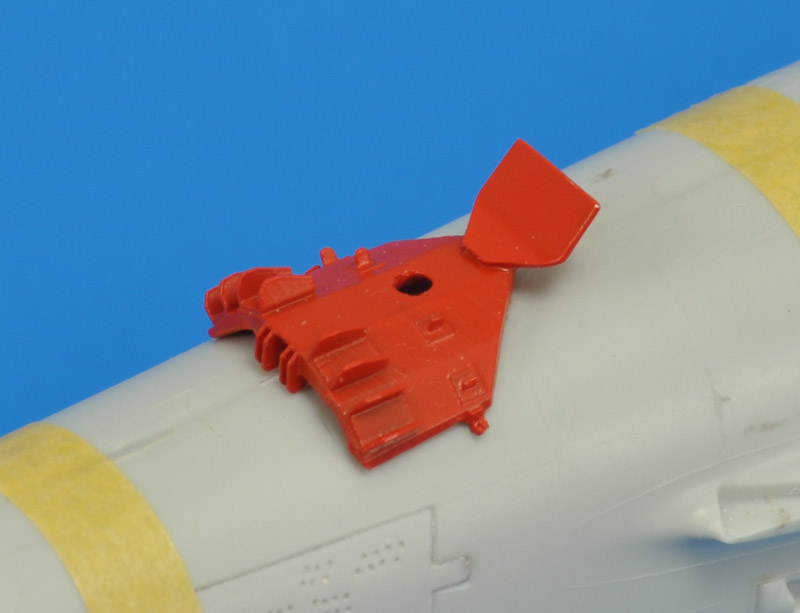
|
| During its last few operational years, the F-84F was also used by the Leeuwarden Base Flight for target flag towing. I've seen the line connected to the dragchute compartment, but around 1970 a Belgian tow rack was copied and used. It cleverly attached to the hooks of the ATO unit. I built it from rod and strip.
| 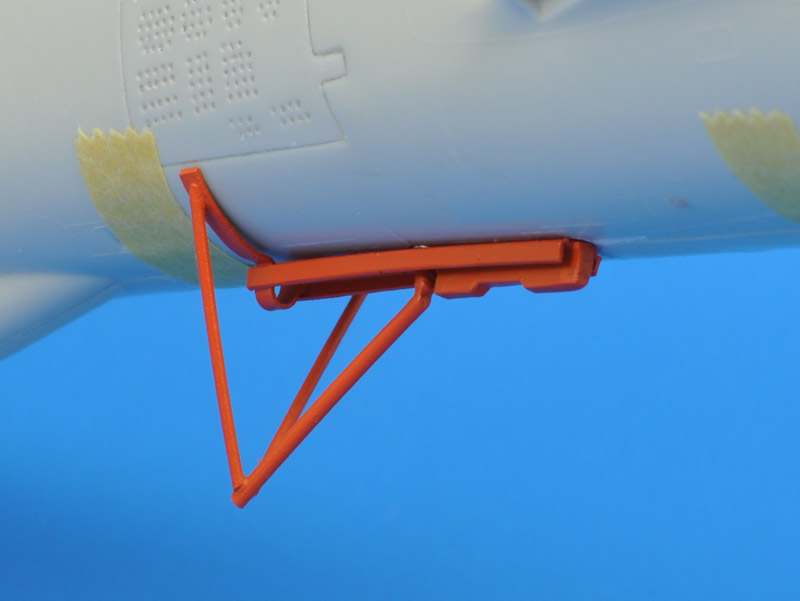
|
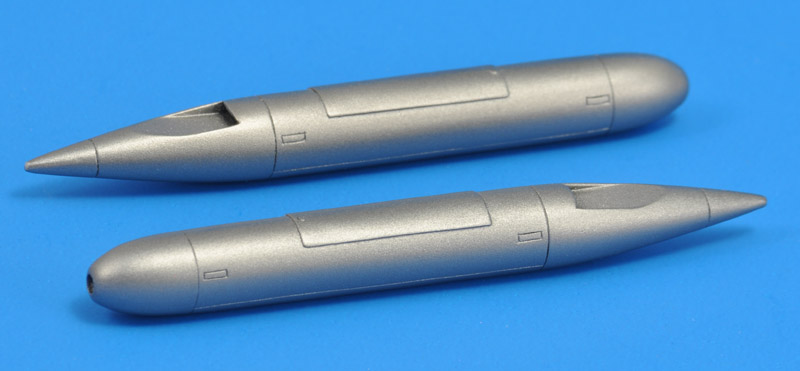
| The last F-84F store that I found out about was the ALE-2 chaff pod. Initially it was used at Eindhoven, and later by the Leeuwarden Base Flight. I scratch-built this part again.
|
| Lastly, my 'piece de resistance': the instructor seat that was attached to the canopy sill, to instruct new pilots in taxying. In the Luftwaffe the instructor pilot stood on the wing, tied to something.
| 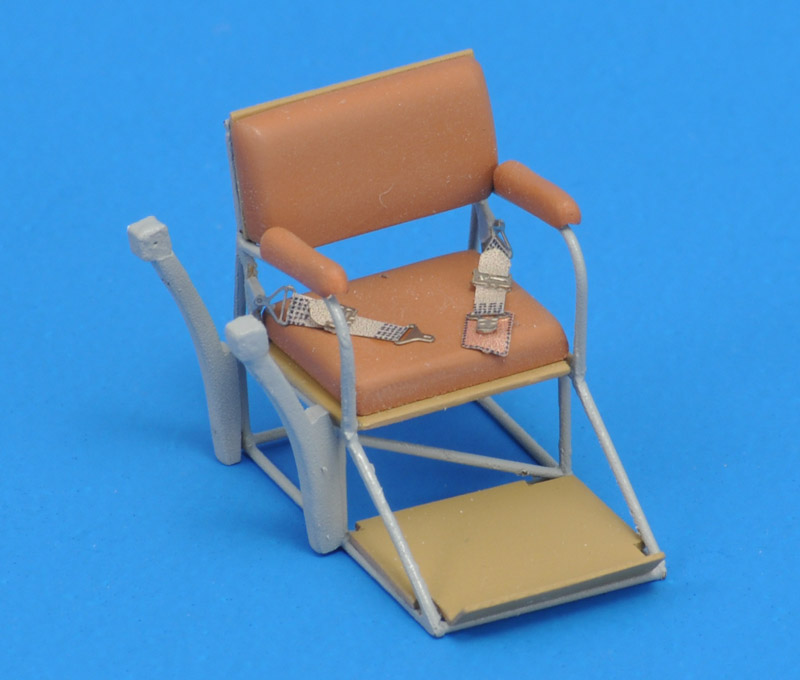
|
RNLAF F-84F strike configurations
| A Volkel 311/312 squadron practice strike mission configuration: three tanks plus MN-1 practice bomb rack (should have closed doors), and an ATO unit.
| 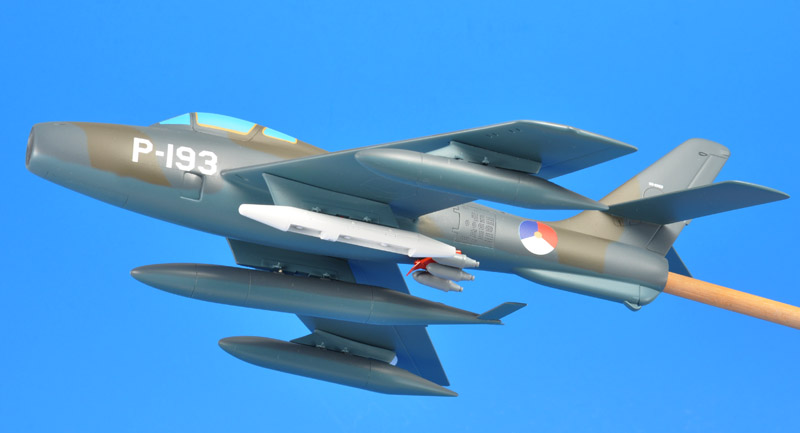
|
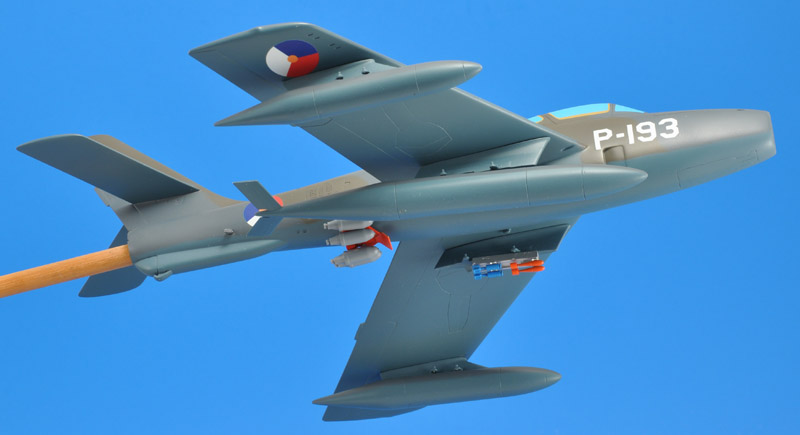
| Another Volkel 311/312 squadron practice strike mission configuration, more commonly seen: three tanks plus B-37 practice bomb rack with four bombs, and an ATO unit.
|
| Volkel 311/312 squadron strike mission configuration just after take-off: three tanks plus B28EX nuclear weapon, plus ATO unit for a 'heavy' take-off.
| 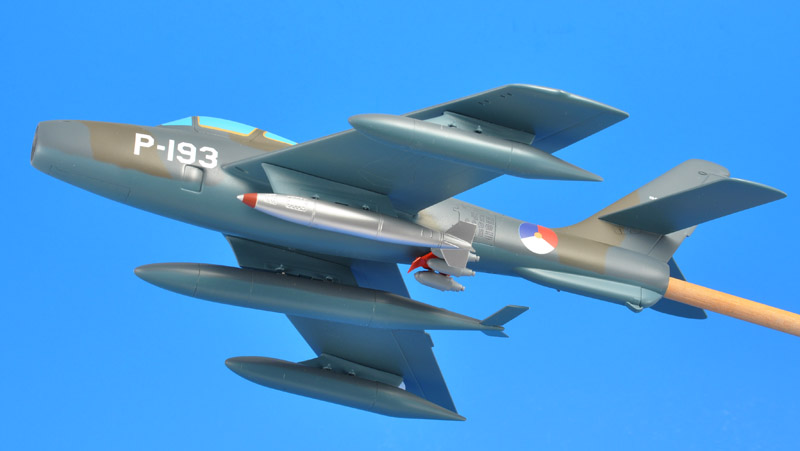
|
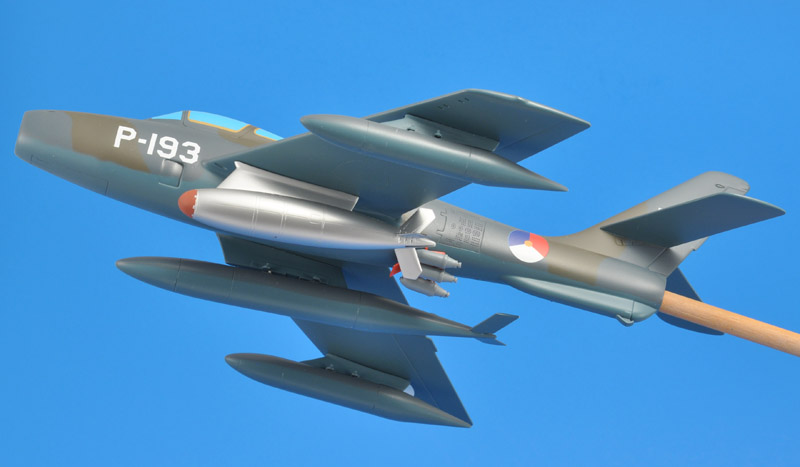
| This is what was long thought to be the Volkel 311/312 squadron strike mission configuration: the Mark 7 nuclear weapon, with its extreme nose-down attitude. But more recent research makes this very unlikely.
|
RNLAF F-84F attack configurations
| Eindhoven 314/315 squadron practice attack mission, with Type 2 450 gallon tanks, M116 napalm on the outboard pylons, and HVAR rockets.
| 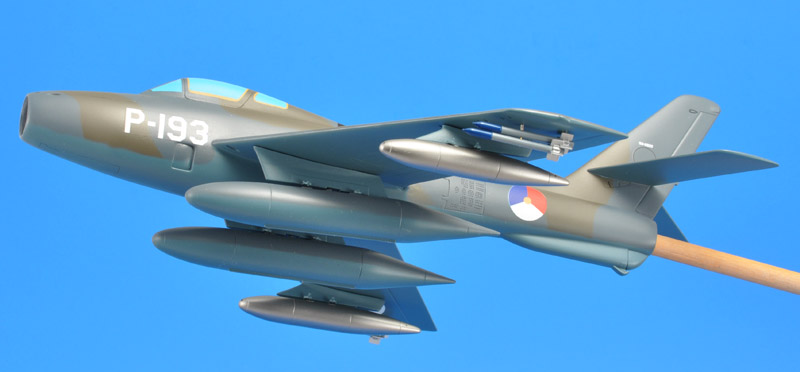
|
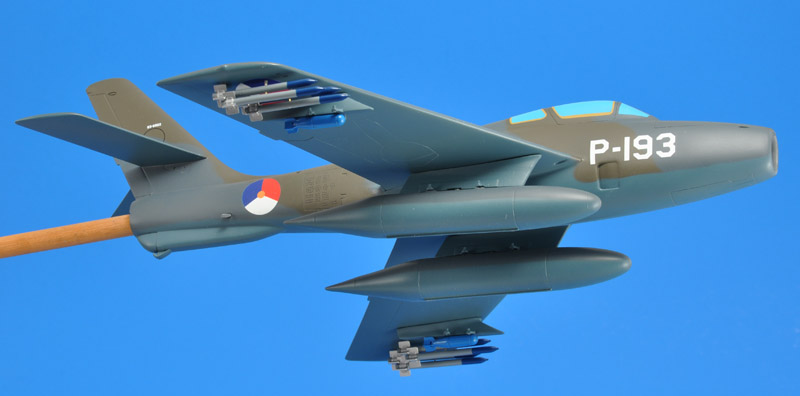
| Another Eindhoven 314/315 squadron practice attack mission, with Type 2 450 gallon tanks, Mk 15 Mod 4 100 lbs practice bombs on the outboard pylons, and HVAR rockets.
|
| Eindhoven 314/315 squadron practice attack mission, with the B-37 rack as used at Volkel, but now on the left outboard pylon.
| 
|
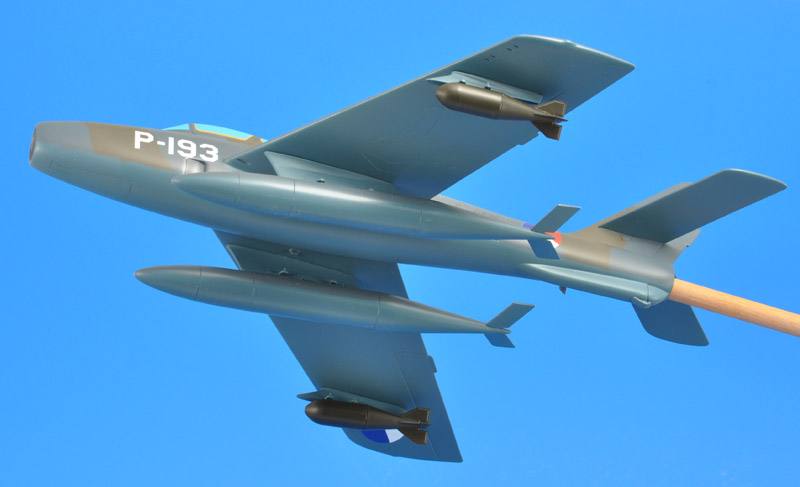
| A possibly theoretical configuration, with two Type 1 450 gallons on the inboard pylons and two M65s on the outboard pylons. No in-flight photos of this configuration seem to exist.
|
RNLAF F-84F target towing configurations
| Leeuwarden Base Flight provided target towing with the F-84F. The orange 'BAF rack' was used to connect the target flag to the ATO mountings points. Smaller 230 gallon tanks were used initially, until the last set in the RNLAF was used up.
| 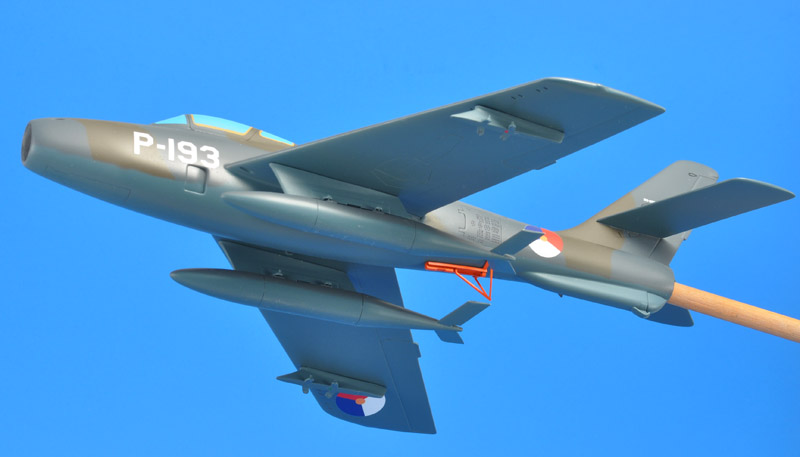
|
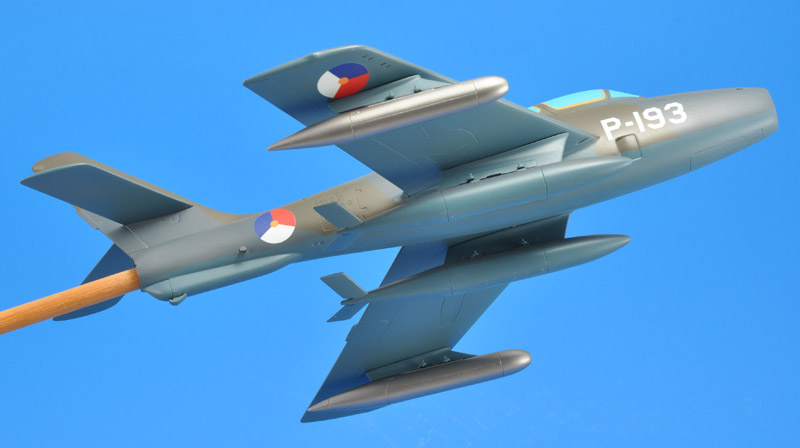
| Leeuwarden Base Flight was probably also the unit that experimented a bit with ALE-2 chaff dispensers.
|
Links
Thanks
In an early stage of this project, Harold Offield (of AMS Resin) kindly sent me everything he had accumulated on the subject of the F-84F. A belated thanks, Harold!
Return to models page















